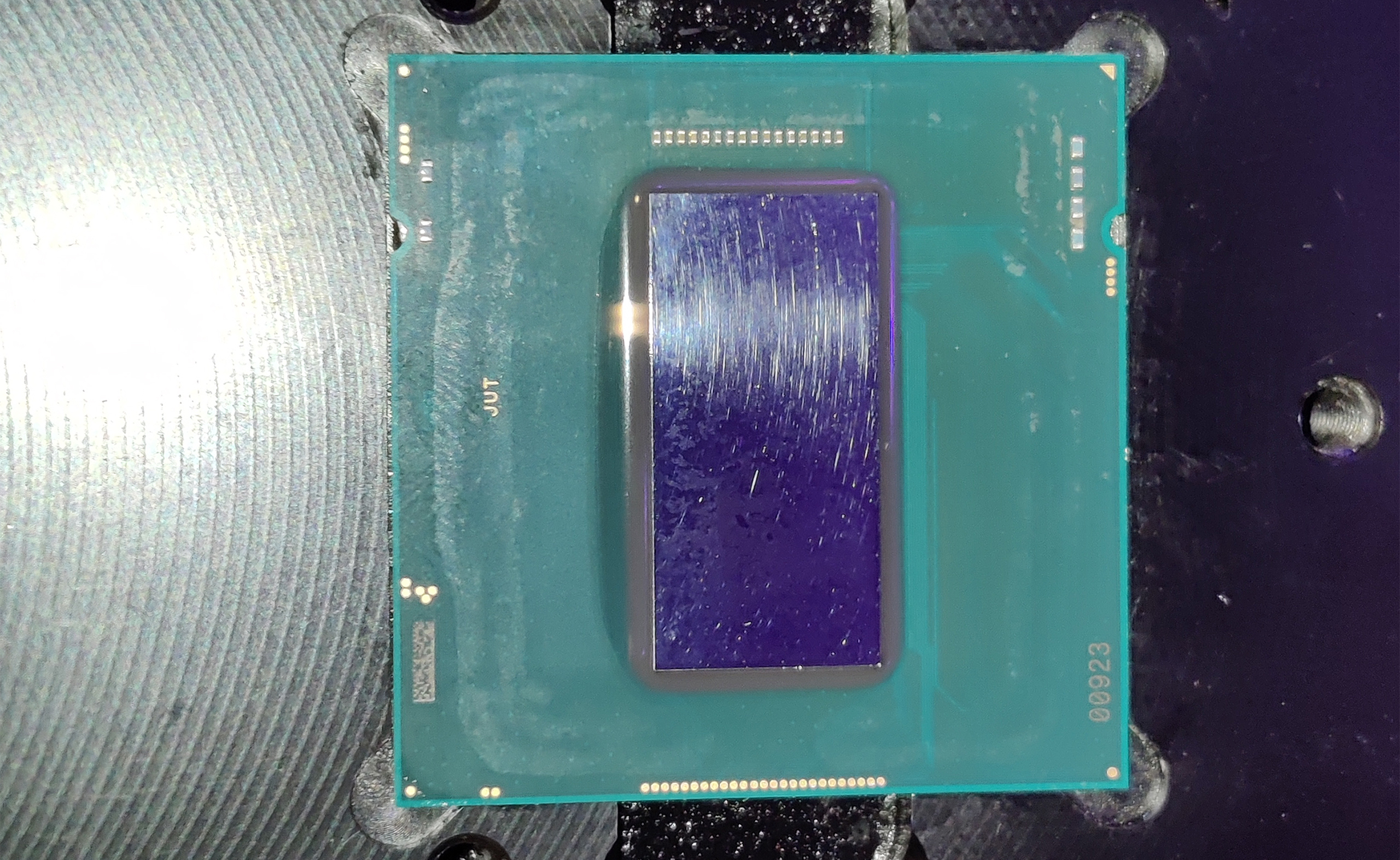Intel's Core i7-11700K 'Rocket Lake' Delidded: A Big Die, Revealed
Intel's Rocket is bigger than Intel's Comet
Although Intel has not yet officially launched its 11th-Gen Core processors for desktops codenamed Rocket Lake, these CPUs were available from a single retailer for a brief period of time, so enthusiasts have already begun experimenting. Recently, one experimenter decided to remove the Core i7-10700K's lid (delid) to reveal the die underneath.
This week MoeBen, an enthusiast from Overclock.net forums, delidded Intel's Core i7-11700K processor. Even though he used special tools for delidding, the CPU died as a result of his manipulations.
The main thing that strikes the eye about Intel's Rocket Lake is its rather massive die size. A quick comparison of Rocket Lake's silicon to delidded Intel's previous-generation processors reveals that the die of Intel's eight-core Core i7-11700K is both 'taller' and 'wider' than the die of Intel's 10-core Core i9-10900K. Also, the new CPU uses a slightly different packaging with resistors placed differently.
Based on rough napkin math based on the size of Intel's LGA115x/1200 packaging (37.5 mm × 37.5 mm), an estimate for the Rocket Lake die size puts it around 11.5mm × 24.0mm, or 276.0 mm2. Such a large die area puts Rocket Lake into the league of the company's LCC high-end desktop and server processors. For example, Intel's 10-core Skylake-SP with a massive cache is around 322 mm2.
By way of reference, using similar measuring techniques, the 10-core Comet Lake chips are around 22.4mm × 9.2mm, or 206.1 mm2. (Intel didn't disclose the actual die size.) That makes Rocket Lake about 34 percent larger than Comet Lake, despite having two fewer cores.
Intel's Rocket Lake processors pack eight cores based on the Cypress Cove microarchitecture (which is a derivative of the company's Willow Cove microarchitecture), an integrated GPU featuring the Xe architecture, a new media encoding/decoding engine, a revamped display pipeline, and a new memory controller.
Essentially, Rocket Lake uses CPU and GPU IP designed for Intel's 10 nm SuperFin process technology, yet since it is made using one of Intel's 14 nm nodes, it is natural that the said IP consumes more silicon area. To that end, it is not surprising that the new CPU is substantially bigger than its predecessor despite the fact that it has fewer cores. Obviously, since these cores are larger (and faster), they take up more die space.
Intel is projected to officially launch its Rocket Lake processors on March 30, 2021.
Get Tom's Hardware's best news and in-depth reviews, straight to your inbox.

Anton Shilov is a contributing writer at Tom’s Hardware. Over the past couple of decades, he has covered everything from CPUs and GPUs to supercomputers and from modern process technologies and latest fab tools to high-tech industry trends.
-
TerryLaze Reply
Intel increased the number of execution units by 25% and increased the IGPU.refillable said:The way Intel is handling the launch reminds me of AMD on the bulldozer era.
Bulldozer decreased the execution units per core compared to their previous CPU and had no iGPU at all.
Where you even born yet when AMD had bulldozer around? -
hotaru.hino Reply
More like how Intel was handling itself during the Netburst days.refillable said:The way Intel is handling the launch reminds me of AMD on the bulldozer era. -
JayNor "Cypress Cove microarchitecture (which is a derivative of the company's Willow Cove microarchitecture)"Reply
derivative of Intel's Ice Lake Sunny Cove cores -
JayNor "... yet since it is made using one of Intel's 14 nm nodes, it is natural that the said IP consumes more silicon area. To that end, it is not surprising that the new CPU is substantially bigger than its predecessor despite the fact that it has fewer cores."Reply
Rocket Lake's predecessor, Comet Lake, used Skylake cores. The difference in size vs Comet Lake, which was also 14nm, is due to the substantial changes in the microarchitecture in the backported Sunny Cove cores which were responsible for Ice Lake's 18% IPC increase in IPC vs its Skylake based predecessor: cache sizes, register files, etc.
There is a table in this article which compares the two, in the context of Cascade Lake vs Ice Lake Server.
https://www.nextplatform.com/2020/08/17/the-ticking-and-tocking-of-intels-ice-lake-xeon-sp/ -
Conahl reguardless, looks like even with newer microcode, performance didnt improve much, and rocket lake could still be a dud :Reply
https://www.anandtech.com/show/16549/rocket-lake-redux-0x34-microcode-offers-small-performance-gains-on-core-i711700k -
refillable Reply
How old do you think am I, 8? Why do you get so upset when I didn't say something that exactly true?TerryLaze said:Where you even born yet when AMD had bulldozer around?
True, but not many people remember that. I was just comparing this to a more recent fiasco.hotaru.hino said:More like how Intel was handling itself during the Netburst days.
